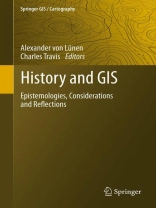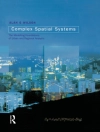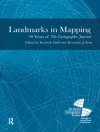Geographical Information Systems (GIS) – either as “standard” GIS or custom made Historical GIS (HGIS) – have become quite popular in some historical sub-disciplines, such as Economic and Social History or Historical Geography.
“Mainstream” history, however, seems to be rather unaffected by this trend. More generally speaking: Why is it that computer applications in general have failed to make much headway in history departments, despite the first steps being undertaken a good forty years ago?
With the “spatial turn” in full swing in the humanities, and many historians dealing with spatial and geographical questions, one would think GIS would be welcomed with open arms. Yet there seems to be no general anticipation by historians of employing GIS as a research tool. As mentioned, HGIS are popular chiefly among Historical Geographers and Social and Economic Historians. The latter disciplines seem to be predestined to use such software through the widespread quantitativemethodology these disciplines have employed traditionally. Other historical sub-disciplines, such as Ancient History, are also very open to this emerging technology since the scarcity of written sources in this field can be mitigated by inferences made from an HGIS that has archaeological data stored in it, for example. In most of Modern History, however, the use of GIS is rarely seen. The intellectual benefit that a GIS may bring about seems not be apparent to scholars from this sub-discipline (and others).
This book wants to investigate and discuss this controversy. Why does the wider historian community not embrace GIS more readily? While one cannot deny that the methodologies linked with a GIS follow geographical paradigms rather than historical ones, the potential of GIS as a ‘killer application’ for digital historical scholarship should be obvious.
This book brings together authors from Geography and History to discuss the value of GIS for historical research. The focus, however, will not be on the ‘how’, but on the ‘why’ of GIS in history.
Inhoudsopgave
-Keep on trackin’ [working title].-
-The Space Between the (Post) and the (Modern): Considering GIS, History, and Geography.-
-Using GIS to Explore the Nonlinear Dynamics of Historic Systems.-
-A class from the past [working title].-
-Beyond GIS: geo-spatial technologies and the future of history.-
-Luddites in social science: the history of choropleth mapping in the Netherlands.-
-Beyond the Narrative: Using H-GIS to Reveal Hidden Patterns and Processes of Daily Life in Nineteenth-Century Cities.-
-The Role of Knowledge Spaces in the design of Historical GIS.-
-Mapping early modern commerce and technology in urban mental landscapes.-
-GIS for Native American history.-
-GIS for environmental history.-
-GIS in Medieval history to map religious apparitions.
Over de auteur
Dr. Alexander von Lünen is a Geography Research Fellow at the University of Portmouth, Hampsire, UK. His principle research interests are digital humanities / historical informatics, Geographical Information Systems (GIS) and history, history of diving, history of aerospace medicine and physiology.
Dr. Charles Travis was awarded a Ph D in Historical-Cultural Geography from Trinity College Dublin in 2006. He is a Post-Doctoral Research Fellow with the Trinity Long Room Hub. His research concerns the historical, cultural and environmental geographies of early twentieth century Ireland; the development of Humanities GIS methodologies and applications, as well as media geographies.












